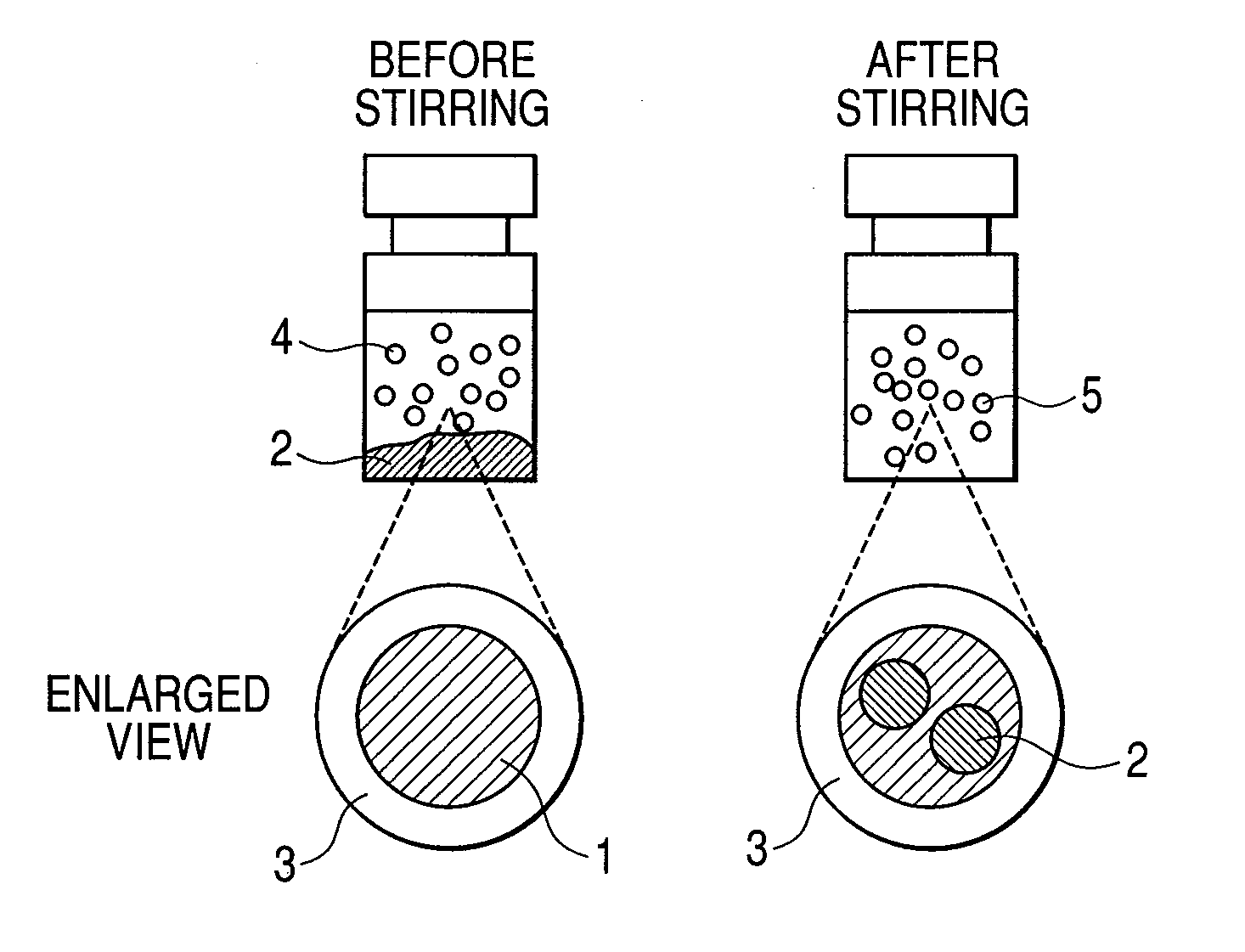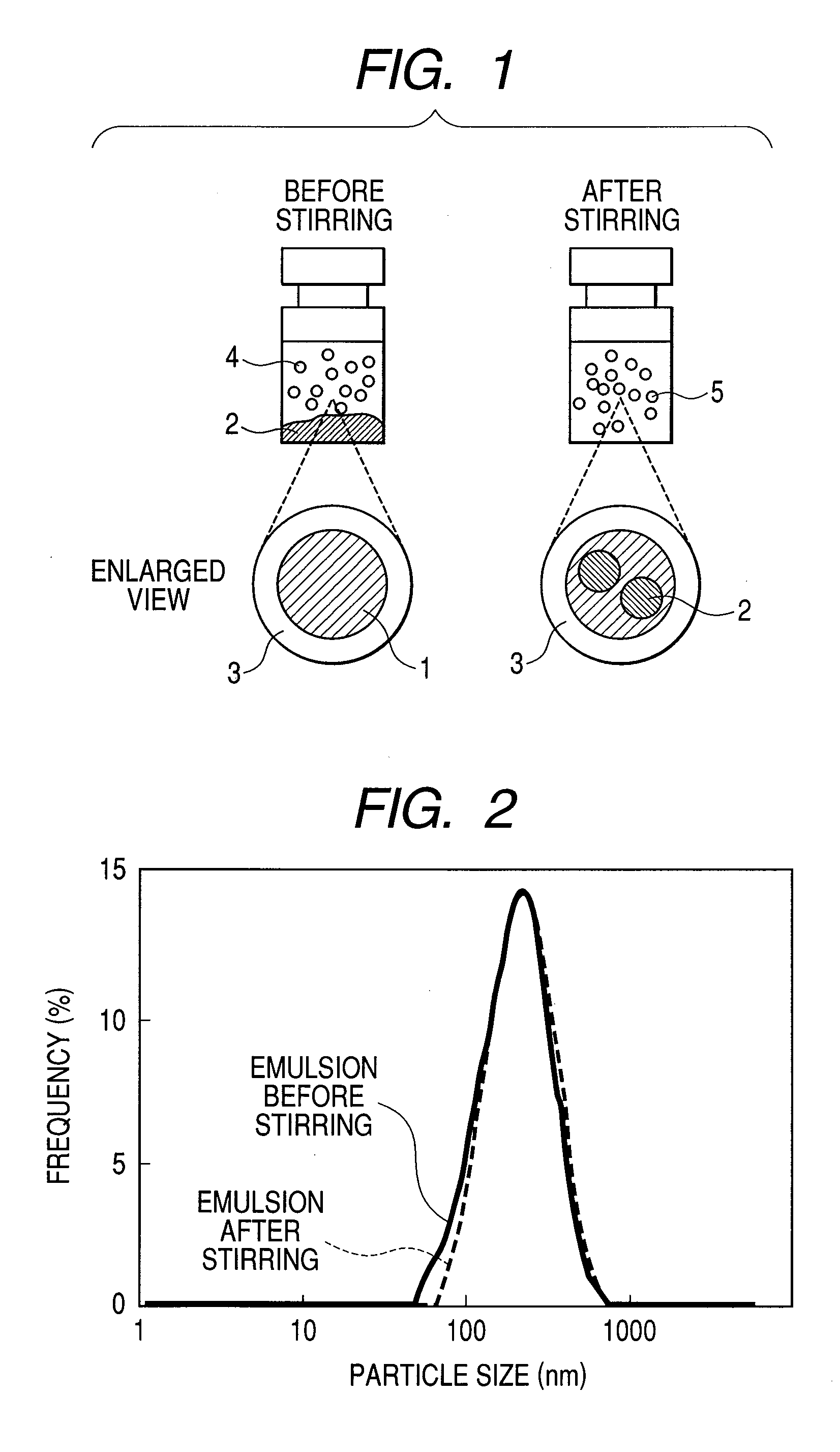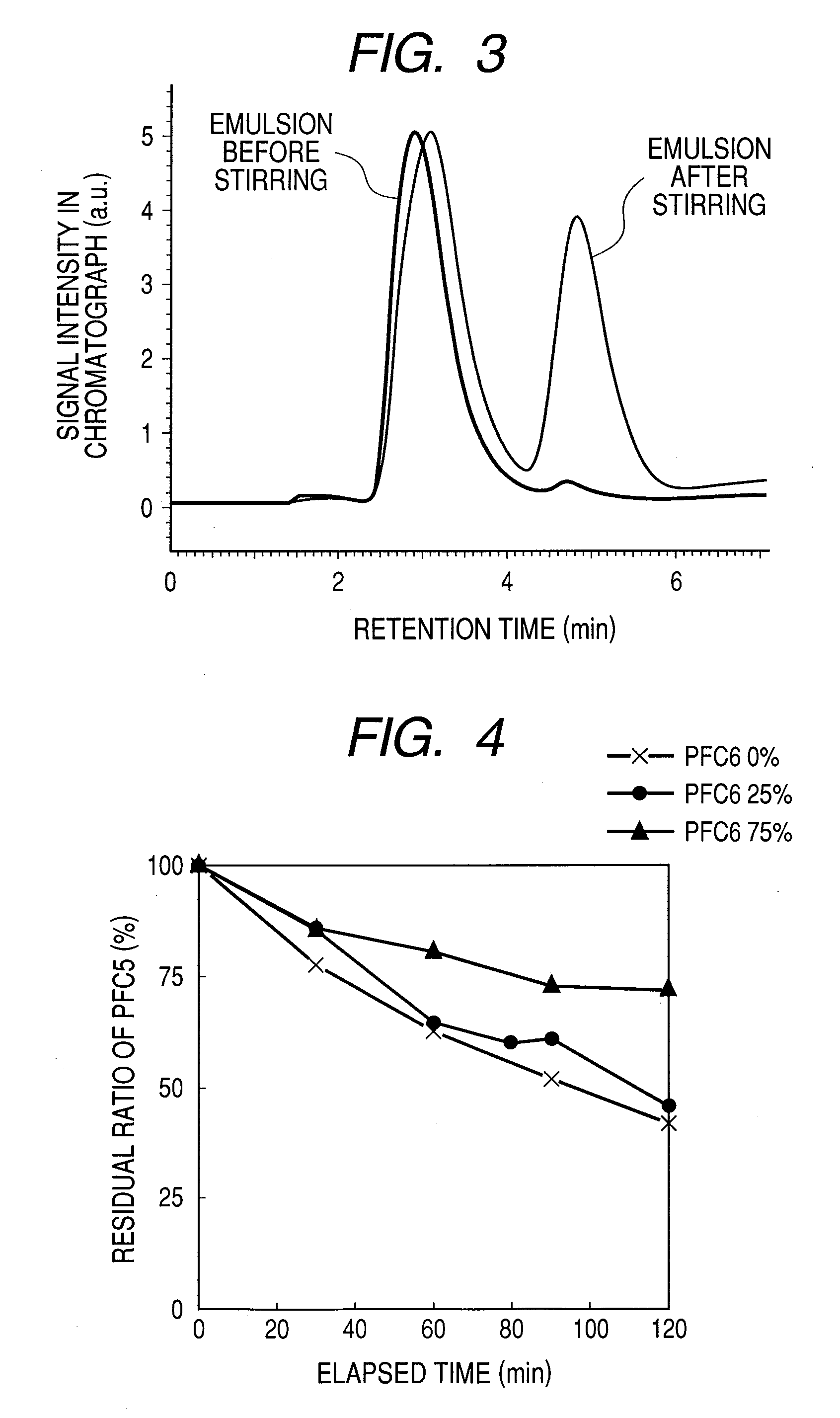Process and apparatus for preparing a diagnostic or therapeutic agent
- Summary
- Abstract
- Description
- Claims
- Application Information
AI Technical Summary
Benefits of technology
Problems solved by technology
Method used
Image
Examples
first example
Preparation Process of an Agent Just Before Use
[0030]First, 0.1 g of soybean-derived phosphatidyl choline and 0.05 g of cholesterol were dissolved in chloroform. The resulting solution was poured in a water tank of 37° C. and dried under reduced pressure. To the residue was added 20 mL of a phosphate buffered saline and 1 second pulse was applied to the resulting mixture for 5 minutes by using an ultrasonic homogenizer to yield a liposome. To the resulting solution was added from 1 to 5% (v / v) of perfluorohexane and the resulting mixture was homogenized at 9,500 rpm at an ice temperature for one minute. The emulsion thus obtained was subjected to high-pressure emulsification treatment at 20 MPa for 5 minutes in “Emulsiflex-C5” (trade name; product of Avestin, Ottawa / Canada), followed by filtration through a membrane filter having a pore size of 0.45 μm. The above-described treatment yielded an almost clear emulsion. As a result of measurement using a particle size analyzer (“LB-550”...
second example
Process of Preparing a Fine Emulsion Containing Water Soluble Polymer Just Before Use (Modification of the First Example)
[0035]In a similar manner to the first example except that in addition to 0.1 g of soybean-derived phosphatidyl choline and 0.05 g of cholesterol, 0.05 g of phosphatidyl ethanolamine added with polyethylene glycol (having a molecular weight of 2000) was used as the emulsifying agent, a fine emulsion was obtained. The resulting emulsion had the same properties as those of the fine emulsions of the first example and Test 1.
third example
Process of Preparing a Fine Emulsion Containing a Mixture of Isopentane with Hexane (Modification of the First Example)
[0036]In a similar manner to the first example except that perfluorohexane and perfluoro-n-pentane were replaced by hexane and isopentane, respectively, a fine emulsion was prepared. The emulsion thus obtained had the same properties as those of the fine emulsion of the first example and Test 1.
PUM
 Login to View More
Login to View More Abstract
Description
Claims
Application Information
 Login to View More
Login to View More - R&D
- Intellectual Property
- Life Sciences
- Materials
- Tech Scout
- Unparalleled Data Quality
- Higher Quality Content
- 60% Fewer Hallucinations
Browse by: Latest US Patents, China's latest patents, Technical Efficacy Thesaurus, Application Domain, Technology Topic, Popular Technical Reports.
© 2025 PatSnap. All rights reserved.Legal|Privacy policy|Modern Slavery Act Transparency Statement|Sitemap|About US| Contact US: help@patsnap.com



